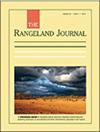A new net primary productivity model and new management strategy of grassland classification based on CSCS in China
IF 1.2
4区 环境科学与生态学
Q4 ECOLOGY
引用次数: 3
Abstract
The discovery of grassland field, form and biomass in China was central to the sustainable development of grassland. In this study, the realistic spatial distribution patterns of grasslands were clarified through the combination of the International Geosphere-Biosphere Program (IGBP) and the Comprehensive and Sequential Classification System (CSCS). An optimal net primary productivity (NPP) model suitable for Chinese grasslands was introduced by integrating the classification indices-based model (CIM) with the Normalised Difference Vegetation Index (NDVI), and comparing it with the standard classical model (Miami, Schuur, CIM, CASA model). Using the optimal model as the algorithm basis, the net primary production spatial pattern of grassland in China was determined. The results showed that: (1) the total area of grassland was ~374.3 × 104 km2 in 2018, mainly distributed in north-western China. Among the grassland super-class groups, Tundra and alpine steppe were largest, and Warm desert smallest; (2) the optimal modified CIM had the highest prediction efficiency, and the overall accuracy was higher than the standard classical model (Miami, Schuur, CIM, CASA model). It achieved the accurate calculation of grassland NPP in China; (3) different grassland super-class groups had different carbon fixation efficiency per unit area, resulting in huge differences in total NPP. Among the various grassland super-class groups, the temperate humid grassland, steppe, tundra and alpine steppe had high conversion efficiency per unit area of NPP, whereas that for warm desert and the savanna was low. The total NPP was 388.04 × 1012 g C/year in the study area in 2018. The results provide a basis for the rational arrangement of grassland ecological and productive functions, and are significant for developing a new strategy of grassland classification management in China.基于CSCS的中国草地净初级生产力分类新模型及管理新策略
中国草原面积、形态和生物量的发现对草地的可持续发展至关重要。本研究结合国际地圈-生物圈计划(IGBP)和综合序列分类系统(CSCS),厘清了草地的现实空间分布格局。将基于分类指数的模型(CIM)与归一化植被指数(NDVI)相结合,提出了适合中国草原的最优净初级生产力(NPP)模型,并与标准经典模型(Miami、Schuur、CIM、CASA模型)进行了比较。以最优模型为算法基础,确定了中国草地净初级生产空间格局。结果表明:①2018年中国草地总面积约为374.3 × 104 km2,主要分布在西北地区;在草原超类类群中,冻土带和高寒草原最大,暖漠最小;(2)最优修正CIM预测效率最高,总体精度高于标准经典模型(Miami、Schuur、CIM、CASA模型)。实现了中国草地NPP的精确计算;(3)不同草地超类群单位面积固碳效率不同,导致总NPP差异较大。各草原超类类群中,温带湿润草地、草原、冻土带和高寒草原单位面积NPP转换效率较高,温暖荒漠和稀树草原单位面积NPP转换效率较低。2018年研究区NPP总量为388.04 × 1012 g C/年。研究结果为合理配置草地生态功能和生产功能提供了依据,对制定中国草地分类管理新策略具有重要意义。
本文章由计算机程序翻译,如有差异,请以英文原文为准。
求助全文
约1分钟内获得全文
求助全文
来源期刊

Rangeland Journal
环境科学-生态学
CiteScore
2.90
自引率
8.30%
发文量
14
审稿时长
>36 weeks
期刊介绍:
The Rangeland Journal publishes original work that makes a significant contribution to understanding the biophysical, social, cultural, economic, and policy influences affecting rangeland use and management throughout the world. Rangelands are defined broadly and include all those environments where natural ecological processes predominate, and where values and benefits are based primarily on natural resources.
Articles may present the results of original research, contributions to theory or new conclusions reached from the review of a topic. Their structure need not conform to that of standard scientific articles but writing style must be clear and concise. All material presented must be well documented, critically analysed and objectively presented. All papers are peer-reviewed.
The Rangeland Journal is published on behalf of the Australian Rangeland Society.
 求助内容:
求助内容: 应助结果提醒方式:
应助结果提醒方式:


